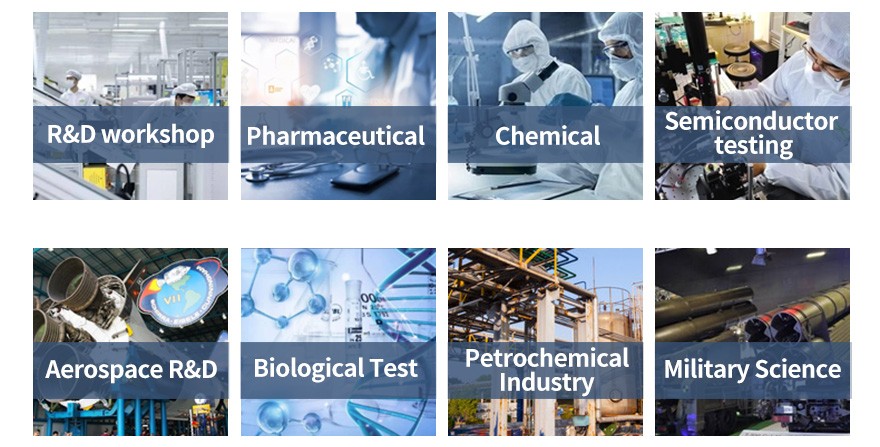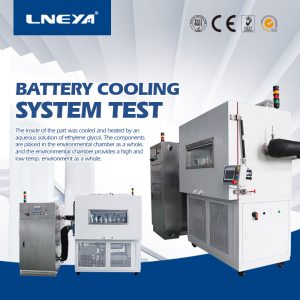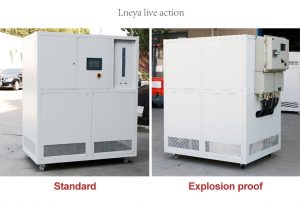Temperature requirements for pharmaceutical process bioreactors and crystallization equipment
Bioreactors and crystallization equipment have their own temperature requirements in the pharmaceutical process, serving different process objectives.
The following is a specific explanation of the temperature requirements for both: Temperature requirements for bioreactors: bioreactors are mainly used for biological processes such as fermentation and cell culture, where temperature control is crucial as it directly affects the metabolic activity, growth rate, product formation, and structural stability of microorganisms or cells. The specific requirements are as follows:
- Physiological suitability range: The temperature inside the bioreactor should be set within the optimal growth temperature range of the cultivated microorganisms or cells. For example, for bacteria, this range may be between 30 ° C and 37 ° C; For yeast and certain fungi, it may be 25 ° C to 30 ° C; For mammalian cell culture, it is usually around 37 ° C. Maintaining a suitable temperature helps maintain high activity, high yield, and good cellular health.
- Stability and uniformity: The temperature not only needs to be maintained at a specific value, but also should be highly uniform throughout the entire reaction volume to avoid cell death or metabolic abnormalities caused by local overheating or undercooling. This usually requires an efficient mixing system and good heat transfer design, as well as precise temperature control systems.
- Process control: Based on specific biological processes and research needs, temperature may need to be dynamically adjusted according to preset procedures. For example, in certain fermentation processes, it may be necessary to induce specific gene expression or regulate metabolic pathways by changing temperature.
- Accuracy and precision: The accuracy of temperature control systems is usually required to be within ± 1 ° C, or even higher, to ensure the repeatability of experiments or production and the reliability of data.
Temperature requirements for crystallization equipment: Crystallization equipment is mainly used to separate and purify solid compounds from solutions, and affects crystal growth and purity by controlling crystallization conditions (including temperature). The temperature requirements mainly include:
- Crystallization temperature window: The crystallization process should be carried out within the crystallization temperature range of the target compound, which usually covers a specific range below the melting point of the compound. Within this range, temperature changes can affect crystal growth rate, crystal morphology (habit), and the tendency of impurities to co crystallize, thereby affecting the purity, solubility, and bioavailability of the final product.
- Supersaturation control: By cooling or evaporating the solvent, the solution becomes supersaturated, inducing crystallization. The selection of temperature drop rate and endpoint temperature is crucial for the crystal growth process. Too fast or too slow cooling may lead to premature nucleation, insufficient crystal growth, or the formation of a large number of small crystals (commonly known as “seed rain”), affecting product quality.
- Crystal habit control: For certain drugs or chemicals, specific crystal habits (crystal morphology and internal structure) have a significant impact on their physical properties and biological activity. By finely adjusting the crystallization temperature and other conditions (such as pH, additives, etc.), it is possible to guide the formation of desired crystal habits and achieve product performance optimization.
- Temperature gradient control: Some crystallization equipment (such as continuous crystallizers) may need to set a temperature gradient to allow the solution to undergo continuous changes from high to low temperature within the equipment, in order to achieve continuous crystal growth and separation.
- Accuracy requirement: The accuracy of temperature control during the crystallization process is equally important, as small temperature fluctuations may significantly affect crystallization kinetics and crystal quality. The accuracy is usually required to be between ± 0.1 ° C and ± 1 ° C, depending on the sensitivity of the crystal and the process requirements.
In summary, both bioreactors and crystallization equipment have very strict temperature requirements in the pharmaceutical process and each has its own emphasis. Bioreactors focus more on providing stable physiological and suitable temperatures for organisms to ensure efficient metabolism and growth; The crystallization equipment emphasizes precise temperature control within a specific crystallization window to guide the formation of high-quality crystals with ideal properties. Both types of equipment require precise temperature control systems to meet these requirements.

Related recommendations
-
Installation Requirements For Ethylene Glycol Cryo Chillers
1484After the purchase of ethylene glycol cryo chillers with professional manufacturers Wuxi Guanya, installation requirements will be sent to the hands of users with the equipment. So, what needs to be paid attention to during the installation of eth...
View details -
What Should Be Noticed In Detail When Installing A Precision Chiller?
1823First, when installation, everyone needs to check whether your cold water machine works normal, whether the accessories are all right, whether there is damage, so as to avoid problems in installation. Second, when installing, the site of the preci...
View details -
Battery test water cooler common knowledge description
1897Battery test Water-cooled air intake If there is no superheat, there may be a return air with liquid, and even cause a wet stroke liquid shock to damage the compressor. In order to avoid this phenomenon, a certain degree of suction superheat is re...
View details -
Precautions for customers installing Lneya’s cryogenic industrial chillers
1767One. When installing low-temperature industrial chillers, you need to pay attention to some installation requirements. 1. The cryogenic industrial chiller should be installed directly in a horizontal position, do not install it upside down or dia...
View details
 LNEYA Industrial Chillers Manufacturer Supplier
LNEYA Industrial Chillers Manufacturer Supplier












